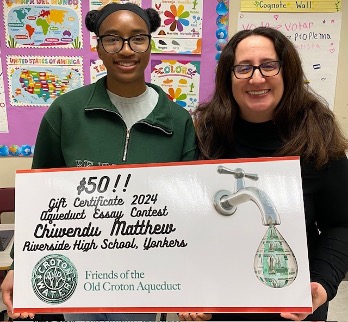Three thousand five hundred and sixteen people lost their lives. Seven hundred buildings were destroyed. All because of water. No one could ever imagine that what is essential to our survival can also lead to our demise. But in this case, it was contaminated water that led to the tragic loss of many lives. To understand the circumstances that led to this destruction, we must start from the beginning, in the year 1832.
Open your window and stare out for a moment. Analyze every crack, pothole, or car that is on the street. Look at the trees as they sway left to right with the wind in harmony. Take a minute to breathe in the fresh air around you. Inhale and let it fill your lungs until your mind is clear and rejuvenated, then exhale. If you were to do this in 1832, the moment the air hit your nose you would have suddenly been struck with the urge to vomit. New York City had yet to develop a sewer system and flushing toilets. Chamber pots served as a substitute and were emptied in the street. Women had to wear parasols and men wore wide-brimmed hats in case “something” fell from the sky. As the population increased, waterways became contaminated, and the salty waters from the Hudson River polluted the water from the well.
Not until death started to creep in from the east did a thought begin to grow in our minds. It was first heard of in Asian countries, then made its way to Europe, taking away the lives of everyone in its path. It went to Canada from Europe, then traveled from New York via the Hudson River. Its very name spread fear like wildfire. Some called it the blue death due to the blue tint that colored the skin of its victims, but its official name was cholera. Cholera was transmitted by drinking water or digesting food infected by feces. New York City’s incompetent separation of sewage and drinking water gave its victims twenty-four hours left to live once they had it. This epidemic was the first stepping stone to building the Old Croton Aqueduct.
However, the Great Fire of 1835 solidified the idea of building it. A fire so destructive that it destroyed seventeen blocks worth of buildings and took two lives. This fire was one of many, and with the scarcity of water and lack of nearby sources, fires became harder to extinguish. The fire lasted for two days.
These events were the catalysts that led to the creation of the Croton Aqueduct. Major David B. Douglass was the first chief engineer to plan the route and the structure. But it wasn’t until John B. Jervis succeeded him in 1836 that the final design of the Croton Aqueduct was finished. Six years later, the 41-mile long and 8-and-a-half-foot diameter Croton Aqueduct was completed and remarkable. At 5 a.m. on June 22, 1842, water entered the aqueduct and traveled into reservoirs in Central Park and Bryant Park. Because of the Aqueduct, people were no longer at risk of catching diseases. There was enough water to go around, even in case of fires. Water could be used for its original purpose: providing life.
Please look out your window once more and appreciate the life surrounding you. Pay close attention to birds, flowers and even the grass that serves as a blanket for the Earth. As the trees sway from left to right, let the fresh air fill your lungs and remember that life exists because of water. The same water that once flowed through the Old Croton Aqueduct has allowed New York City to breathe once again.


